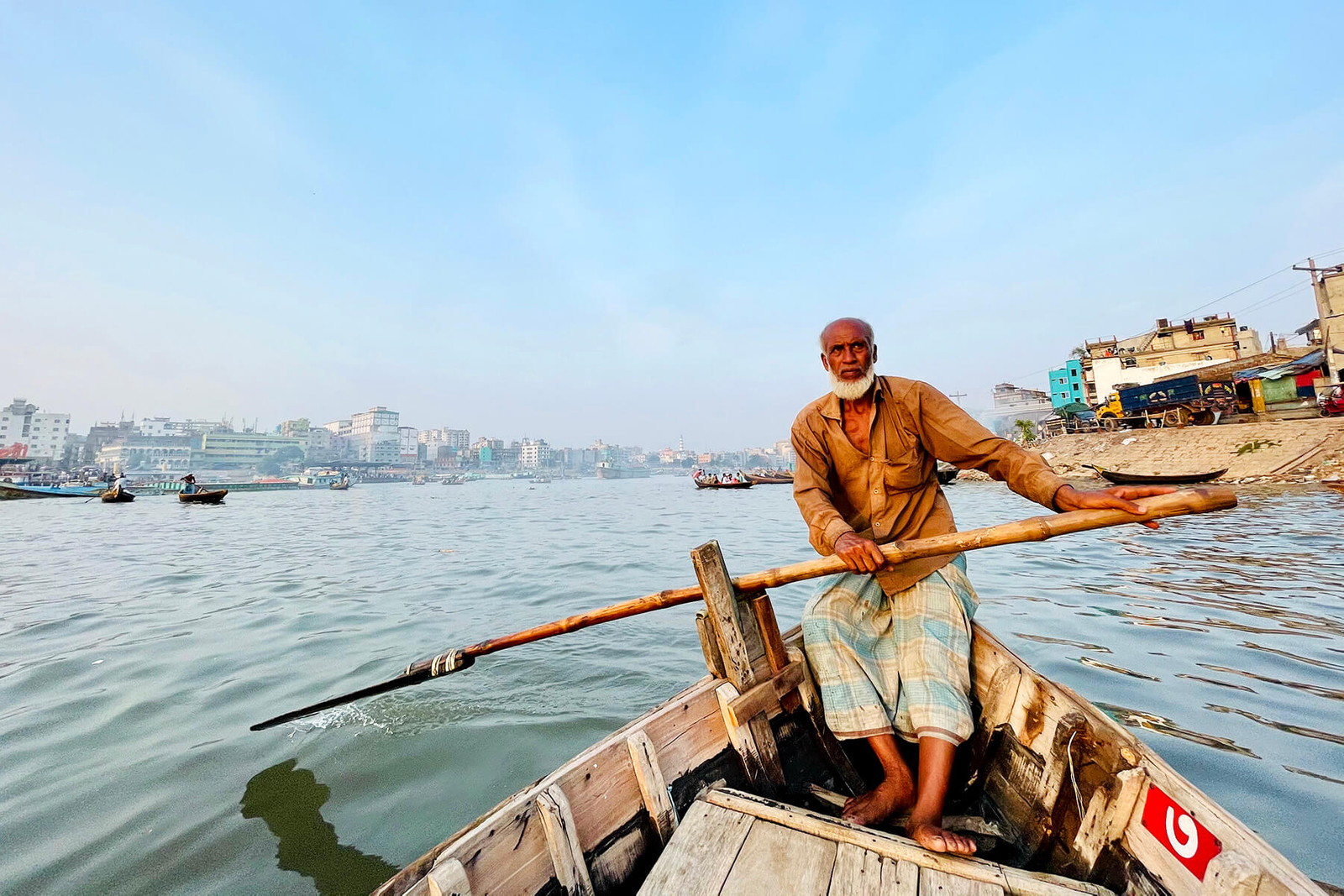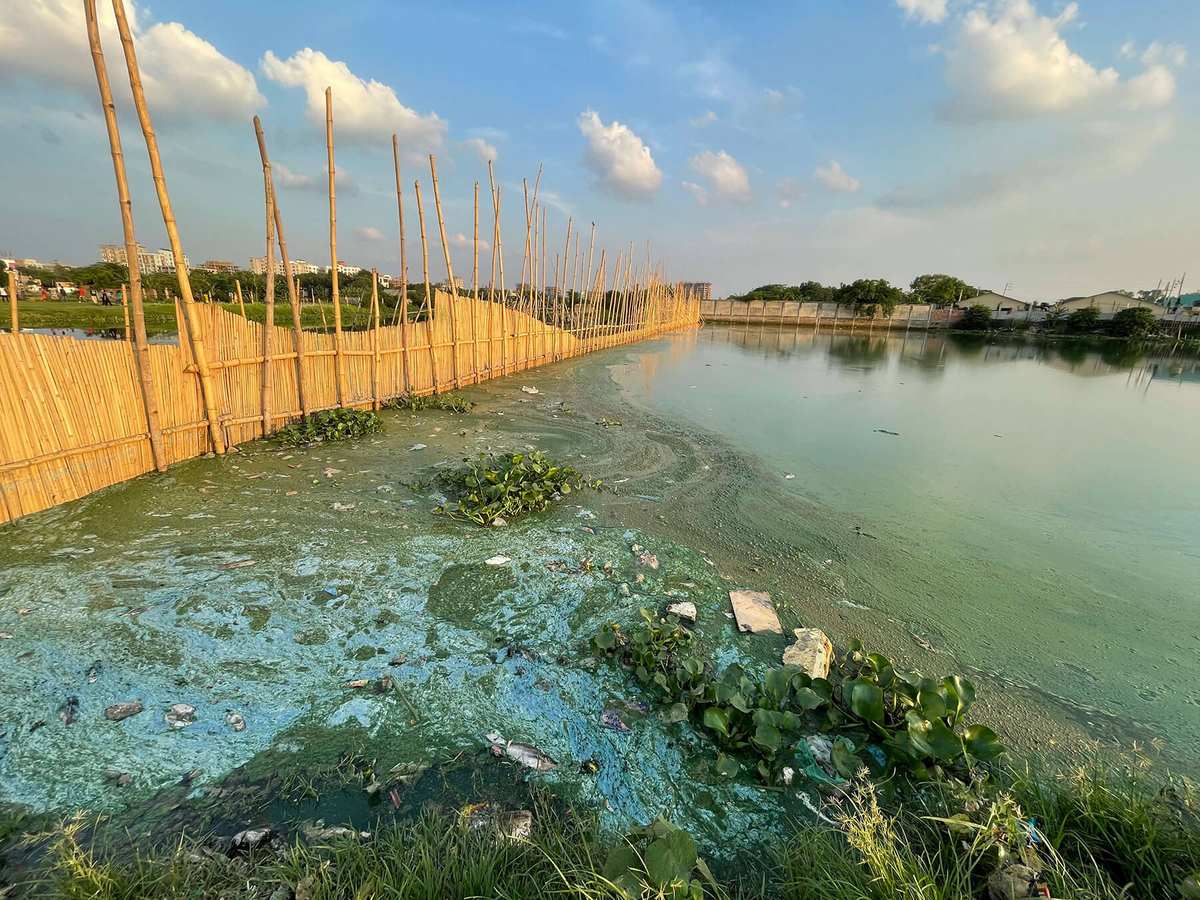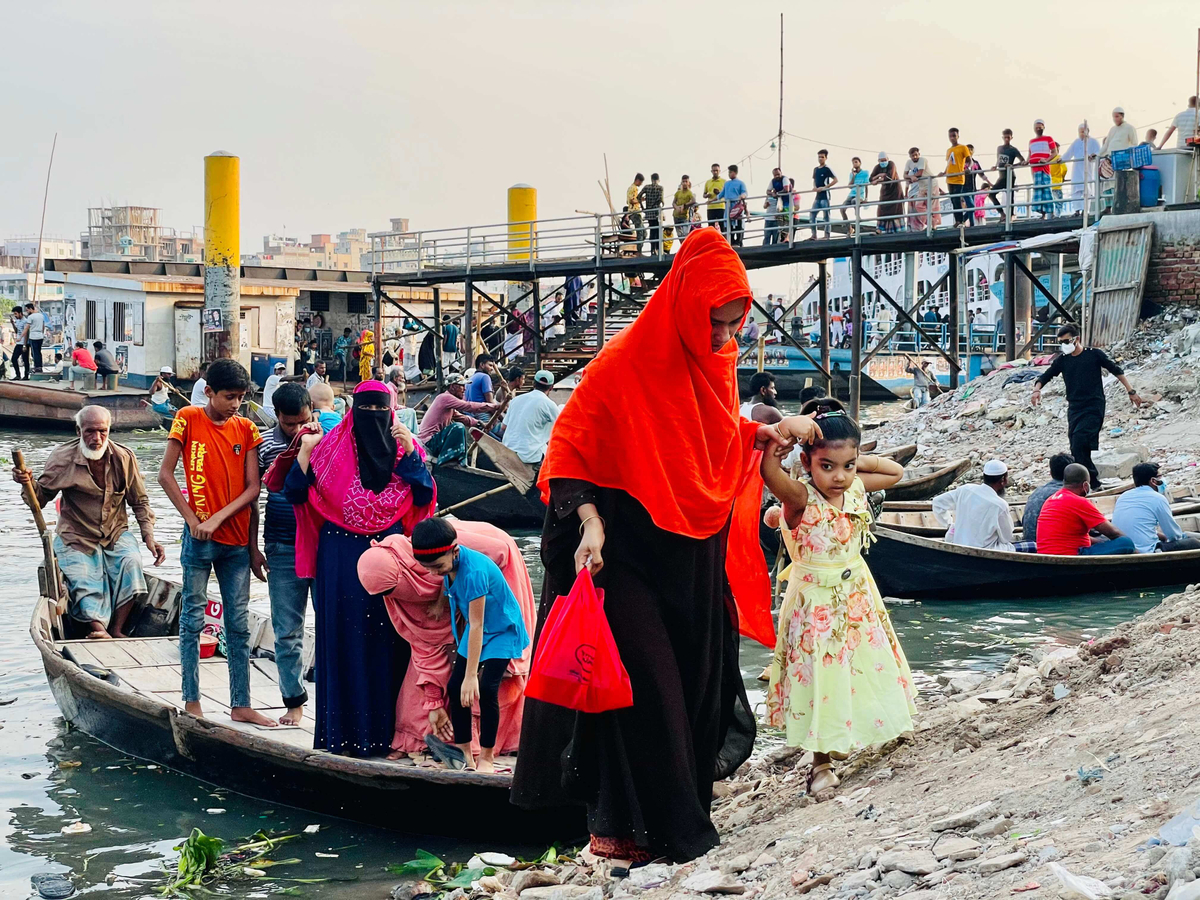Water pollution is a major threat to rivers, public health, and biodiversity in Bangladesh.
During my bachelor studies, I had to travel back and forth from Dhaka to Savar. On the way to the university, I could see the Turag, Karnatali, and Buri rivers sweep by. For four years, I witnessed how untreated water from textile manufacturing factories polluted the nearby rivers and canals.
Seeing the industrial pollutants such as fabric color and chemicals contaminating the water bodies, I used to wonder how it affected water quality, human health and nature. I was puzzled, beginning to think "Does profit need to come at the cost of the environment and communities’ health?". These reflections were the starting point for me to find work in social enterprises, and later in environmental organisations.
Dhaka, my home
Dhaka, the capital of Bangladesh, is the city where I was born, brought up, and lived for 30 years. In the southwest corner of this city, we have the Buriganga river. It connects the other parts of the country through a river transport network, thus, has high commercial importance to the Bangladeshi people. In 2014, I had a chance to conduct research on the impacts of the Buriganga’s water pollution.
I observed that the water of the river was dirty and thick because of pollution. The people I interviewed reported skin disease after using the river water, livelihood loss for the fisherfolk, and odor problems due to the pollution of the Buriganga. In a recent newspaper article, Dr. Ainun Nishat, Water Resources and Climate Change Expert of Bangladesh stated,
When I was a student in the 1950s and 1960s, the Buriganga was a clean river. I remember seeing hundreds of fishing boats at the time, the Gangetic dolphins enjoying the waters, and the river was considered holy for religious purposes. Today, the water is so polluted that we cannot even think of dipping our toes into it. We cannot think of drinking it even after processing. Dr Ainun Nishat

Very recently, I had a short visit to this river to see the current condition. I observed a noticeable change in the watercolor because of the partial relocation of the tanneries to Savar. Still, the river water was polluted. The surroundings of the river were also full of different types of waste including household and commercial waste, industrial wastewater, sewage water etc.
People dump solid waste in the river banks which eventually goes to the water. The polluted water of the river and odor disproportionately affect the health of the local communities and the passersby. The boatman who was showing me around told —
"This boat is home to me. I live in the Buriganga for the last 8 years. I and the other homeless boatmen take a bath here. I get rashes on my skin after using this water. But I do not have any other way because this river is both home and livelihood to me. I cannot leave this river. Initially, the odor was intolerable to me but now I got used to it."

The source of pollution
Uncontrolled extension of settlements, encroachment, poor waste management system, weak monitoring mechanisms and lack of awareness and actions at the community-level are the major reasons behind water pollution in urban and peri-urban areas of the country.
If we take a look at the public health issues, polluted water and odor from this water are hazardous for people and the biodiversity. In the same article I mentioned before, Dr. Nishat has pointed out the areas we need to focus on to reduce water pollution. In his words —
"Our monitoring system is extremely poor and the capacity of the Department of Environment needs to be upgraded."

The water bodies inside the city are polluted for the same reasons. Another recent visit to Shagufta at Mirpur area of Dhaka city was an eye-opener for me to comprehend the current water pollution situation in peri-urban areas. Similar to the Buriganga, household and industrial waste are the main cause of water pollution here.
I noticed how the untreated household wastewater is being discharged on the river. While interviewing Mr Johny, a school teacher and a volunteer of the NGO, Social and Economic Enhancement Programme (SEEP), I came to know about the locally-led actions to clean the water bodies. According to him —
"Majority of the people are not aware of the consequences of water pollution. However, as a volunteer, I represent the community and assist them in taking initiatives and reminding the duty bearers to perform their duties properly. We, the community in collaboration with the NGOs and the city corporation, try to clean the water bodies. I believe our small actions could significantly contribute to reducing water pollution."
I had an opportunity to talk to Md. Yeakub Hossain, the Urban Environment Specialist of SEEP. He mentioned —
"We are an overpopulated country, our municipalities do not have many resources to do everything for us. Hence, actions need to come from the communities in solving the pollution-related problems. Alongside, the city corporation should introduce a reward and penalty based system to tackle the problem."

Overcoming the pollution
If we revisit both the cases we could see how collaborative efforts from the duty bearers and communities make a big difference in managing pollution problems in the canal of Mirpur. As Buriganga is a big river, the tragedy of the commons is strongly hampering the river's health.
The communities are not making efforts to reduce water pollution through managing their waste. Lack of a monitoring mechanism amplifies the problem. Thus, along with proper monitoring, we need more people like Johny to come forward in leading the community-level actions.
Together we can save our water by taking individual and community levels actions.





